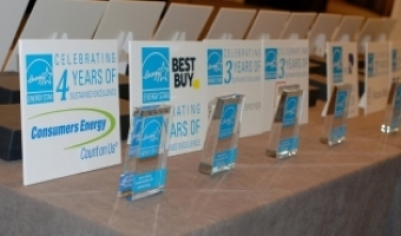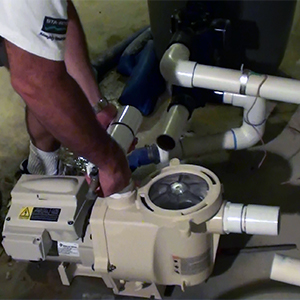

JULY 27, 2017
A primary strategy for the CEE High Efficiency Residential Swimming Pool Initiative is to focus on the largest energy savings opportunity within residential swimming pools, namely, the comparatively inefficient single speed pool pumps that are in common use. If you've been maintaining your own list of pool pumps eligible to receive rebates, you'll be happy to hear that CEE is now publishing a list that aligns with Initiative goals and benefits from manufacturer input. The qualifying product list is available in both spreadsheet and PDF formats, which members are now welcome to reference as part of their pool pump programs.
The Consortium supports the manufacture, sale, and installation of high efficiency pool pumps in part through specifications and the newly published qualifying products list (QPL). The Residential Pool Pump Specification defines energy efficiency by looking at low speeds along a plumbing curve, while the QPL enables CEE members to promote qualifying pumps through incentive, educational, and promotional programs. The QPL is based on data from ENERGY STAR® Product Finder and the Association of Pool and Spa Professionals database. Manufacturers may directly submit products as well. Publication of the QPL was quickly achieved once details of the specification were clarified along with approvals to use existing datasets.
The Initiative aims to promote the purchase and proper installation of high efficiency swimming pool equipment in order to achieve energy savings in both new and existing residential swimming pools. Since single-speed pool pumps operate at very high speed setting, they consume much more energy than is required to provide the necessary water turnover in a residential swimming pool. Identifying higher efficiency multi or variable speed pumps is a good alternative to single-speed pumps. Variable speed pool pumps provide the largest energy savings opportunity given their capability to run at very low speed settings. CEE estimates that two-speed pumps can garner 55 percent energy savings and variable speed units likely 83 percent energy savings compared to single-speed units.

The CEE high efficiency pool pump specification is technology neutral, where the performance criteria and metrics are independent of the technology. Tier 1 is set at a level that is achievable by two-speed or multispeed pool pumps, whereas only variable speed pumps can meet the Tier 2 requirements.
Given energy savings goals and codes among states and provinces, some CEE members choose only to promote variable speed pumps, while other programs support all pool pumps capable of operating at lower speed settings. The CEE qualifying product list enables members to easily identify pool pumps meeting CEE performance tiers to support both these program models.
With the completion of DOE standard for dedicated purpose pool pumps, DOE supported a new test method and metric for assessing pool pump efficiency. This final rule became effective on May 18, 2017 and has a compliance date of July 19, 2021.
Starting in Q4 of 2017, CEE plans to begin revising the pool pump specification to reference these updates as well as consider the addition of a minimum flow rate and criteria for pool pumps with connected functionality. It is also CEE understanding that EPA intends to revise the ENERGY STAR pool pump specification in the near future. Members plan to be very involved in that revision process and maintain alignment with the CEE specification when possible.
About CEE
CEE is an award-winning consortium of efficiency program administrators from the United States and Canada. Members work to unify program approaches across jurisdictions to increase the success of efficiency in markets. By joining forces at CEE, individual electric and gas efficiency programs are able to partner not only with each other, but also with other industries, trade associations, and government agencies. Working together, administrators leverage the effect of their ratepayer funding, exchange information on successful practices and, by doing so, achieve greater energy efficiency for the public good.